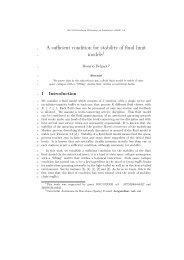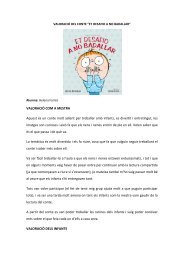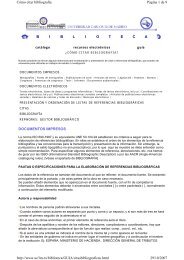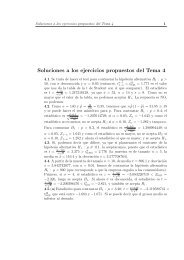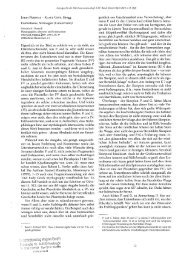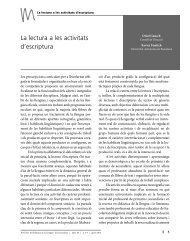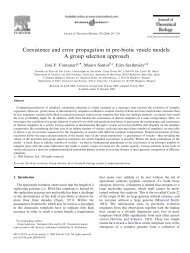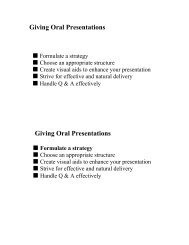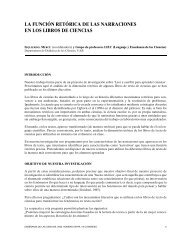please do not cite without permission from the authors
please do not cite without permission from the authors
please do not cite without permission from the authors
Create successful ePaper yourself
Turn your PDF publications into a flip-book with our unique Google optimized e-Paper software.
5.2 Related issuesInvestment, intellectual property rights, public contracts and competitionpolicies also form part of <strong>the</strong> negotiating package of <strong>the</strong> EPAs. If <strong>the</strong> capitalmarket is liberalised in <strong>the</strong> future it is possible to imagine a larger amount ofFDI going to <strong>the</strong> SADC countries. This reinforces <strong>the</strong> need to establish‘performance requirements’ for investors. Yet, just as in <strong>the</strong> case of <strong>the</strong> LatinAmerican Free Trade Agreements, <strong>the</strong> tendency here seems to be <strong>the</strong>opposite, in <strong>the</strong> sense that <strong>the</strong> failed initiative to set up a MultilateralAgreement on Investment Agreement (MAI) is now returning through <strong>the</strong> back<strong>do</strong>or in <strong>the</strong> form of regional MAIs. The intention is to prioritise <strong>the</strong> interests of<strong>the</strong> foreign investors against those of governments which, as a result, lose<strong>the</strong>ir room for manoeuvre to launch pro-development policies at a time whenmultinational companies are moving into <strong>the</strong>ir countries (Intermón-Oxfam,2008; Bidaurratzaga, 2008).As in <strong>the</strong> case of trade, <strong>the</strong> main reasons for <strong>the</strong> EU to put <strong>the</strong>se trade relatedissues about <strong>the</strong> liberalisation of FDI on <strong>the</strong> negotiating agenda are <strong>the</strong>following: <strong>the</strong> previous move by its main competitor, <strong>the</strong> USA, in <strong>the</strong> samedirection through its Free Trade Agreements (FTAs) with Latin Americancountries; and <strong>the</strong> increasing entry of capital into <strong>the</strong> region <strong>from</strong> o<strong>the</strong>r nontraditionalpartners such as China, India, Malaysia, <strong>the</strong> Arab countries, SouthKorea and Taiwan (UNCTAD, 2010).So <strong>the</strong> EU’s proposals try to go beyond its own Cotonou Agreement or <strong>the</strong>WTO rules, adding up to what has been called ‘WTO+’, which aims to makeprogress at <strong>the</strong> regional level on <strong>the</strong> negotiation of <strong>the</strong>mes which are atpresent paralysed at <strong>the</strong> multi-national level of <strong>the</strong> WTO (Intermón-Oxfam,2008; Bidaurratzaga, 2008; Keet, 2007). In most cases <strong>the</strong> countries of SSAhave nei<strong>the</strong>r <strong>the</strong> capacity nor <strong>the</strong> need to negotiate such questions which <strong>the</strong>yhave encountered before in <strong>the</strong> WTO and which are <strong>not</strong> affected by <strong>the</strong> expiryof <strong>the</strong> waiver that <strong>the</strong> EU used as an argument for changing its previous model(Goodison, 2009; Intermón-Oxfam, 2008; Marín, 2008; Keet, 2007). The factthat <strong>the</strong> EU has managed to make <strong>the</strong>se questions, which <strong>the</strong> developingcountries have always refused to negotiate in <strong>the</strong> WTO, part of <strong>the</strong> future20




